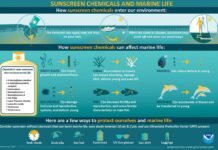
Monoculture opponents consider the concept of a “renewable plantation” an oxymoron, since large-scale propagation of any single crop requires heavy use of soil-depleting fertilizers and pesticides—and the petroleum that’s part of their composition. And some scientists worry that biofuel crops pose a risk of invasiveness, a serious concern on islands whose indigenous species have been under attack for centuries by aggressive aliens.
A 2009 report by the Pacific Cooperative Studies Unit at the University of Hawai‘i–Manoa warned, “Government agencies and businesses should not assume that biofuel production is benign.” In the report, “Assessing Bio-fuel Crop Invasiveness: A Case Study,” co-authors Christopher Buddhagen, Charles Chimera and Patti Clifford compared forty proposed biofuel crops, including jatropha and guinea grass, with forty non-biofuel plant species that have already been introduced to the Islands, and found the biofuel list potentially two to four times more invasive.
Guinea grass is among the energy crops the HC&S/CTAHR project will study. Project leader Andrew Hashimoto, a professor of molecular bioscience and bioengineering at CTAHR, acknowledges that “invasiveness is a valid concern. Guinea grass is very invasive, and it’s already here. If you look at any former sugar or pineapple field that has been out of production for two or three years, what you see growing there is probably guinea grass.” He says cultivation controls such as crop rotation and pesticides would be needed to keep invasiveness in check.
Paradoxically, prolific growth is one of the plus factors in determining a potential energy crop’s economic viability. But a wide range of “inputs”—the costs of production—weigh into the equation. In what types of soil and at what elevations will a candidate crop thrive? Is the ideal acreage contiguous? “Biomaterials are not very dense,” says Hashimoto. “They’re bulky for the amount of energy you get, compared to coal or oil. If you have to transport crops long distances, every mile means lost efficiency. Machines for harvesting in difficult terrain, such as slopes and rocky soil, are also a cost.”
So is the energy it takes to convert feedstock—plant fiber and juice—into fuel. Methods include fermentation (the process that transforms corn into ethanol); expressing oil from palm nuts, jatropha seeds and other plant materials; and “second-generation” processes such as gasification of cellulose, thermal/chemical processing, and even extracting oil from algae whose growth is boosted with carbon dioxide.
“Can we grow a crop that’s feasible economically, including conversion? We’re so early in the process,” says Hashimoto.





